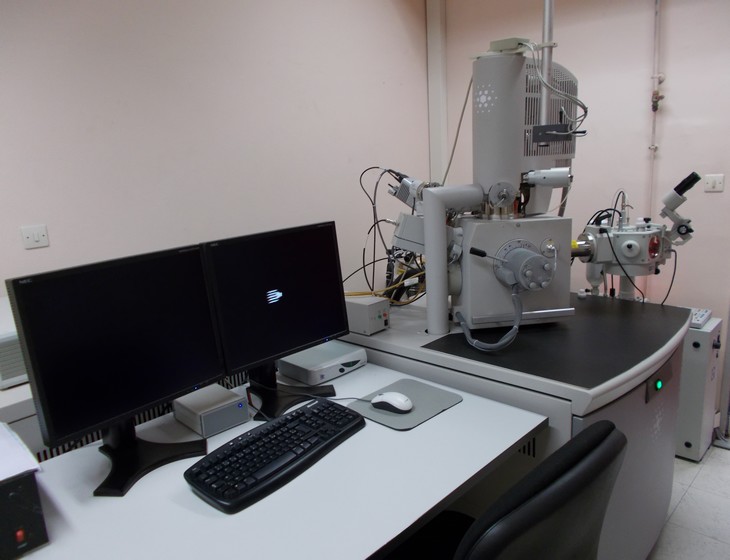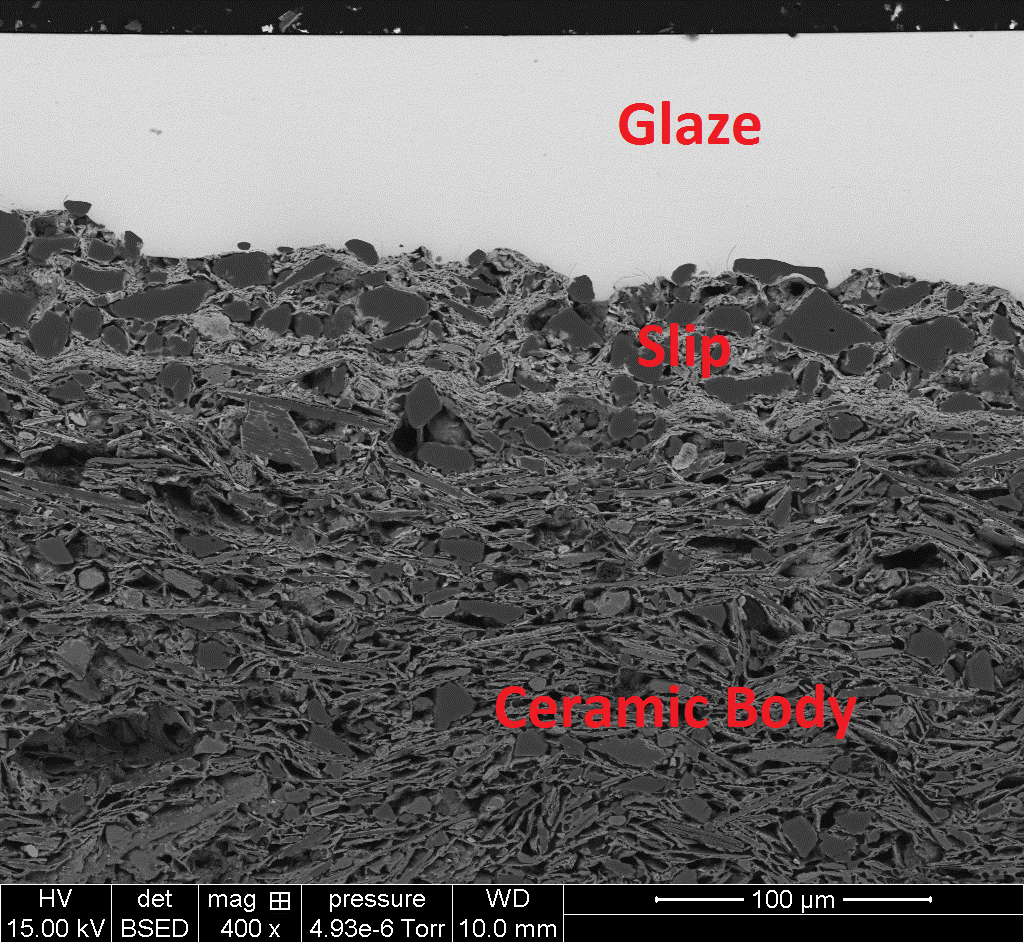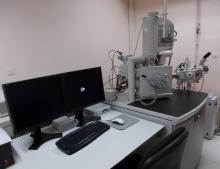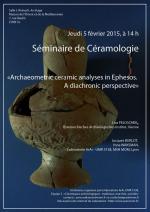SEM analyses of medieval Western Anatolian ceramics

For a few months now, Jacques Burlot has been studying production techniques of Western Anatolian ceramics with SEM analyses. The studied samples are specific of ceramic types such as polychrome sgraffito wares (“Fette Ware” type), “Miletus” ware, the turquoise glazed and molded wares.

This study focuses more precisely on the ceramics’ decorative layers which are the glaze and the slip; the SEM analyses enable us to determine their elemental compositions and microstructures.
This work, associated with provenance studies and chronological ones, aims at understanding the way new techniques in pottery manufacture were introduced in Western Anatolia between the Late Byzantine and the Early Ottoman periods.
View under the SEM (backscattered electrons) of the microstuctrure of a ceramics, showing the layers of body, slip and glaze
Photo J. Burlot











